Fall Lesson Plan

Lesson Plan Mindmap for fall – Click to Enlarge
CLICK ICONS TO JUMP DIRECTLY TO EACH SUBJECT ON THIS PAGE








FALL LESSON PLAN
This page is a free-shared lesson plan archive for teaching all educational subjects within the context and theme of “Fall”. It is purposed for use in community education environments, homeschool environments, traditional schooling environments, or as a supplemental and fun addition to any education program. As part of the complete Education for Life Program, this lesson plan is specifically designed to work in conjunction with the other components: Foundations of Teaching, Curriculum, Teaching Strategies, Learning Tools and Toys, Evaluation Model, and The Ultimate Classroom. If you’d like to learn how all these components work together, click here. Click here for the specifics focused on just using the lesson plans:
CLICK HERE FOR A DETAILED TUTORIAL ON HOW TO USE THIS LESSON PLAN
NOTE: The colors are provided as a possible linear progression (red/easiest to violet/most challenging) for people that might prefer a more linear structure. Our core philosophy, however, is that through creativity every color can be made easy or challenging for any learning level.
RELATED PAGES (mouse-over for descriptions and click for complete pages)
EDUCATION OVERVIEW | HOW TO USE THIS COMPONENT | OUR OPEN SOURCE PURPOSE
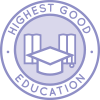
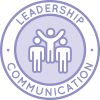
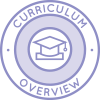
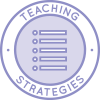
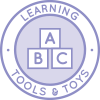
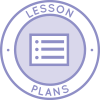
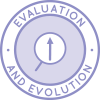
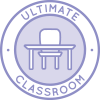


WAYS TO CONTRIBUTE TO EVOLVING THIS EDUCATION PROGRAM WITH US
SUGGESTIONS | CONSULTING | MEMBERSHIP | OTHER OPTIONS
A NOTE ABOUT ALL ONE COMMUNITY LESSON PLANS
The One Community lesson plans are intentionally designed for use in ANY educational environment and with ALL educational, cultural, religious/spiritual, and philosophical approaches to teaching and learning. They are designed without an ideological approach and specifically so they can be adapted to include the views, preferences, methodologies, and/or ideologies preferred by different parents and teachers.
For maximum flexibility and adaptation, they are also designed to be combined to teach multiple subjects at the same time. Doing this increases the creativity, effectiveness, and fun of your learning environment. Once we are on the property and operating our version of the complete school and Education for Life program, we will be adding video examples of how to combine the lessons. In the meantime, visit the Teaching Strategies page for a list of suggestions.
ARTS AND TRADES
CLICK HERE FOR THE COMPLETE SUBJECT OUTLINE FOR ARTS & TRADES
 | TEACHING ARTS AND TRADES WITHIN THE CONTEXT OF FALL |

| The Arts- Go into the forest, or any other environment with some elements of nature, and collect one or more items that represents fall to you. Make a piece of art* with what you have found (e.g. pasting on a piece of paper, coloring with paint, hanging on a string).
- Make a picture book* about fall.
- Create a collage* that represents fall and display it in a community location.
- Write a short skit* related to fall and perform it in front of an audience.
- Create puppets* wearing fall clothing and use them to present a fall themed puppet theater performance in front of an audience.
- Using recycled materials such as unmatched scarfs and old t-shirts, create a scarf, blanket, or other item* which is used during the fall season, researching tutorials online as needed.
- Using fall as an inspiration, create a pattern* for others to create a finished piece of clothing. Make a finished example* with your pattern instructions and open source them.
|

| Trades- Learn to make a soup* using one or more fall vegetables that are in season.
- Make an instrument*, such as shaker or drum, with things you can find outside or in the market only during the fall season.
- Carve* a pumpkin or similar vegetable which is only available in the fall.
- Learn to bake something* using the theme of fall, using vegetables and/or fruits that are available only in the fall. Create and record* your own recipe, and free share it.
- Learn which fruits and vegetables are harvested in fall, and then go to some orchards and farms, and with permission, experience harvesting. Create a cornucopia* and invite others to share in your personal harvest.
- Using natural items found in the fall combined with other natural, sustainable, plant based ingredients, create a line of 5+ natural home and/or beauty items* like dish detergent or face wash. Try your line and invite others to try them and give you feedback, and make improvements to the line based on the feedback.
- Look at the fall-themed items and statements stores/stands use to try to sell fall products. Research how professionals create displays and then make a welcoming, fall-themed display* in one or more stores or stands.
|
| CLICK HERE TO EMAIL US IF YOU HAVE AN IDEA TO ADD TO THIS SECTION |
* Please note that anything with an asterisk is just a suggestion. The diversity of options with asterisks are interchangeable and purposed to stimulate your own ideas. Any one of these suggestions could be replaced with a written paper, any form of art project (drawing, painting, music, paper mache, clay, wood, knitting/embroidery, metals, etc. etc.), an experiment, a presentation, a mindmap, a computer program, a web design project, a piece of poetry or a song, an interpretive dance or play, a group project, or anything else. What we feel is most important is that both the Learner and the Teacher agree on an exercise/activity they both feel would be maximally engaging, fun, and effective. If you come up with an idea we haven’t already thought of, please share it with us.
ENGLISH
CLICK HERE FOR THE COMPLETE SUBJECT OUTLINE FOR ENGLISH
Note: Any language can be substituted for English. The subject is listed here as “English” because that is the primary language of most of the people on the team, and the official language of the country we’re building our initial location in.
 | TEACHING ENGLISH WITHIN THE CONTEXT OF FALL |

| - Find and share* 8 words that you feel describe something about the fall season to you, and explain* your choices.
- Choose your favorite short story about fall, and choose your favorite dialogue or section to read aloud to others. Then talk about* why that was your favorite.
- Write a page or more* to describe something about the season fall. Use a thesaurus to include 3 different words to say the same thing, writing one of your sentences 3 different ways.
- Write a 800 to 1000 word piece of fiction* that takes place in the fall, using aspects of the season within the story.
- Choose at least five different classical poems about autumn. Write a 3+ page analysis* of these poems, in terms of structural features and other characteristics of poetry.
- Research fall as it is described in a variety of sociolinguistic ways. Identify any language variations due to class aspiration, gender, age and any other cultural characteristics you notice. Open source a comprehensive 5+ page article* on your findings.
- Research and use advanced knowledge of literary criticism to write a 10+ page comprehensive critical review* of a literary work that takes place mainly in the fall. Open source and free share your review.
|
| CLICK HERE TO EMAIL US IF YOU HAVE AN IDEA TO ADD TO THIS SECTION |
* Please note that anything with an asterisk is just a suggestion. The diversity of options with asterisks are interchangeable and purposed to stimulate your own ideas. Any one of these suggestions could be replaced with a written paper, any form of art project (drawing, painting, music, paper mache, clay, wood, knitting/embroidery, metals, etc. etc.), an experiment, a presentation, a mindmap, a computer program, a web design project, a piece of poetry or a song, an interpretive dance or play, a group project, or anything else. What we feel is most important is that both the Learner and the Teacher agree on an exercise/activity they both feel would be maximally engaging, fun, and effective. If you come up with an idea we haven’t already thought of, please share it with us.
HEALTH
CLICK HERE FOR THE COMPLETE SUBJECT OUTLINE FOR HEALTH
 | TEACHING HEALTH WITHIN THE CONTEXT OF FALL |

| - In Chinese medicine, it is especially important to keep one’s belly warm during fall. Take note of what you have been wearing outdoors and to bed, and think about and discuss* whether or not you and your belly have been warm enough.
- List 5 beverages and/or soups you or those around you drink in the fall. Research why it is beneficial to drink hot beverages and soups, especially when it is cooler outside.
- In fall, nature changes can cause situations that effect people’s health, such as when damp leaves harbor molds. Create a mind map* showing some health conditions that may occur during fall and any documented natural ways to inhibit, prevent, or alleviate them.
- Learn about the core body temperature of humans and the range from hypothermia to fever. Create a visual display* that includes a graph showing this range, an explanation of the regulation of body temperature, and an explanation of hypothermia and fever and how to prevent these in the fall.
- Research and write about advice on what is physically needed before carrying out physically demanding activities associated with fall (hiking, raking leaves, etc.). Write a 5+ page report*, and include the consequences and supporting statistics of not following this advice.
- Research some superfoods recommended for fall and write a blog article* exploring these. Conduct and include your own trials of them and include your results and observations in your article.
- Learn about how our skin and its needs change in the fall and how we should better take care of our skin during this season, and create an article in advice column or health magazine* to covers this topic.
- Autumn is the start of the flu season. Write and free share a 5+ page scholarly essay* about the flu and the crisis in antibiotic resistance, and any convincing propsoed solutions.
|
| CLICK HERE TO EMAIL US IF YOU HAVE AN IDEA TO ADD TO THIS SECTION |
* Please note that anything with an asterisk is just a suggestion. The diversity of options with asterisks are interchangeable and purposed to stimulate your own ideas. Any one of these suggestions could be replaced with a written paper, any form of art project (drawing, painting, music, paper mache, clay, wood, knitting/embroidery, metals, etc. etc.), an experiment, a presentation, a mindmap, a computer program, a web design project, a piece of poetry or a song, an interpretive dance or play, a group project, or anything else. What we feel is most important is that both the Learner and the Teacher agree on an exercise/activity they both feel would be maximally engaging, fun, and effective. If you come up with an idea we haven’t already thought of, please share it with us.
MATH
CLICK HERE FOR THE COMPLETE SUBJECT OUTLINE FOR MATH
 | TEACHING MATH WITHIN THE CONTEXT OF FALL |

| - Create a picture* of a jack-o’-lantern on paper using geometrical shapes you cut out or by drawing shapes, and then name all the shapes used in your picture.
- Find out what a Harvest Moon is. Then, find out the angles at which the sun, earth, and moon are positioned during the Harvest Moon. Create a one page report* on these angles and 3-5 different things that the Harvest Moon effects.
- Using graph paper, draw the x-axis and y-axis, and then draw a graph image of a pumpkin/ jack-o’-lantern or other fall-themed object. Choose 10 or more points on your drawing as needed to make a clear replication of the image, and write out* the x,y coordinates for each point. Give those coordinates to someone, have them plot them and connect the dots, and see if their image looks like yours. Make adjustments to your coordinates as needed to make sure your intended image can be drawn.
- On the autumn equinox, the sun shines directly at the equator, causing the northern and southern hemispheres to both get 12 hours of daylight. Calculate the ratio of sunlight in both hemispheres. Using data available on the Internet, find out the same information (ratios) for the spring equinox, winter solstice and summer solstice, and create a table* to display this.
- Use trigonometry to calculate* the daylight hours in 10 different cities at various latitudes on the autumn equinox. Create a presentation* of your calculations and 5+ applications where this data could be useful.
- Study basic astronomical equations and use them to explain the autumn equinox and associated phenomena. Do a podcast* showing your knowledge.
- Write and open source publish an in-depth report* showing your understanding of and ability to use applied mathematics within astronomy associated with the season, fall.
|
| CLICK HERE TO EMAIL US IF YOU HAVE AN IDEA TO ADD TO THIS SECTION |
* Please note that anything with an asterisk is just a suggestion. The diversity of options with asterisks are interchangeable and purposed to stimulate your own ideas. Any one of these suggestions could be replaced with a written paper, any form of art project (drawing, painting, music, paper mache, clay, wood, knitting/embroidery, metals, etc. etc.), an experiment, a presentation, a mindmap, a computer program, a web design project, a piece of poetry or a song, an interpretive dance or play, a group project, or anything else. What we feel is most important is that both the Learner and the Teacher agree on an exercise/activity they both feel would be maximally engaging, fun, and effective. If you come up with an idea we haven’t already thought of, please share it with us.
SCIENCE
CLICK HERE FOR THE COMPLETE SUBJECT OUTLINE FOR SCIENCE
 | TEACHING SCIENCE WITHIN THE CONTEXT OF FALL |

| Life Sciences- Collect pictures of 5+ food plants that can become ripe or harvestable in fall. Create a collage* and label each plant.
- Create a list of 10 or more insects that like to move indoors in the fall and write a paragraph or more* about this phenomenon in general.
- Create a list of 10 or more birds that migrate to warmer climates in the fall and write a paragraph or more* about this phenomenon in general.
- Find out why leaves turn colors in the fall in areas with cooler climates, and create a visual display* explaining various pigments.
- Explain autumnal dormancy in insects. Create a 2 to 5 page report* explaining this topic and giving some examples of insects that go through autumnal dormancy.
- Create a presentation* on how fall affects some animals living in higher latitudes, including their reproduction. Choose one particular animal or a group of animals to discuss more in-depth, and create a section of the presentation to report* on this.
- Create a video presentation* explaining photoperiodism and how it works. Discuss in more depth some short-day plants that bloom in the fall.
- Write and publish a 5+ page cited scholarly essay* about animal migration in fall, including how animals prepare for migration and how they navigate along the way. Choose a group or specific animal to focus on and discuss in more detail (e.g. birds, fish or marine mammals).
- Design and create a pamphlet* explaining the biology behind seasonal effective disorder and how the onset of the fall triggers this. Offer several suggestions on how to offset this reaction.
|

| Physical Sciences- Think of 3-5+ materials that are generally worn in fall more than other seasons. Create a collage* of four materials and see if other people can guess what they are.
- Explore the sun’s path across the sky where you live in a diagram, showing how it is different for different seasons. Write 2 paragraphs* explaining how/why you think this affects the amount of light received in the fall.
- Write a 2-5 page report* explaining salinity in bodies of water and how this changes in the fall, using specific examples, such as lakes near where you live.
- Create a visual project* showing atmospheric pressure and seasonal variations in atmospheric pressure, noting especially the difference between fall-Winter and spring-Summer.
- In some areas, Fall is planting season. Do some research and locate a few places where that is true. Design a scientific investigation* of soil chemistry in locations where fall is the planting season in comparison to other locations.
- Make a presentation* that explains the seasons, especially fall, using thermodynamics (heat transfer by radiation), to counter the idea that it is distance from the sun that produces the seasons. Include an explanation of why the Earth’s poles are so much colder than equatorial regions.
- Explain the chemistry of the colors of fall leaves and create two presentations*, one explaining the phenomenon to those with college-leveled knowledge of chemistry and another to those who have just begun studying chemistry in high school.
- Temperatures become cooler with the arrival of fall. Create and open source an experiment* using applied physics to explain the heating and humidifying of indoor spaces and the need for these.
|

| Earth Sciences- Choose one country or area in which fall is the best season to visit. Describe* the weather there in the fall.
- What months is autumn in the Northern Hemisphere, and what months is autumn in the Southern hemisphere? Use a map of the Earth’s position relative to the Sun to create a model* and write 3 paragraphs* to explain this and why it is.
- Choose two countries or areas on Earth and write an essay* that compares and contrasts their fall weather, including temperature, precipitation, humidity, etc.
- Create a map* that highlights at least five countries or areas which one would ideally not visit in the fall. Use graphics on the map to show the reasons why, and write a brief essay* describing fall weather in these areas and why you would not recommend them.
- Find out which areas of Earth are considered to not really have fall and instead, have a more abrupt transition from summer to winter weather. Write a 3 to 5 page report* about these places and their climates.
- Write a 5+ page scholarly cited essay* exploring the connection between global cimate change and the increased risk of floods, forest fires and other weather- or climate-linked hazards, especially during the fall season.
- Write a 5+ page cited scholarly essay* exploring how climate change is predicted to result in more frequent droughts and cloud cover in some areas and the consequences of this for what we know as the fall season.
- Choose a topic from the Earth Science violet section of the molecule that relates to the season of fall and write a lesson plan* for high school level students.
|
| CLICK HERE TO EMAIL US IF YOU HAVE AN IDEA TO ADD TO THIS SECTION |
* Please note that anything with an asterisk is just a suggestion. The diversity of options with asterisks are interchangeable and purposed to stimulate your own ideas. Any one of these suggestions could be replaced with a written paper, any form of art project (drawing, painting, music, paper mache, clay, wood, knitting/embroidery, metals, etc. etc.), an experiment, a presentation, a mindmap, a computer program, a web design project, a piece of poetry or a song, an interpretive dance or play, a group project, or anything else. What we feel is most important is that both the Learner and the Teacher agree on an exercise/activity they both feel would be maximally engaging, fun, and effective. If you come up with an idea we haven’t already thought of, please share it with us.
SOCIAL SCIENCES
CLICK HERE FOR THE COMPLETE SUBJECT OUTLINE FOR SOCIAL SCIENCES
 | TEACHING SOCIAL SCIENCES WITHIN THE CONTEXT OF FALL |

| - Find pictures of fall celebrations around the world and make a collage* of the images.
- List five foods considered fall foods in your culture or part of the world, and then list five foods of another culture. Research what accounts for similarities and differences and give a short speech* about this.
- Choose a culture different from your own, and then use pictures and text in a visual display* to compare how autumn is celebrated in your culture and in the chosen culture (e.g. special festivals and traditions).
- Write a 3 to 5 page essay* explore the mythology behind the season of fall in at least three different cultures.
- Make a short film* about the history of fall or autumn as a recognized season, including why there are two different names for this season in the English language. Research to see what other cultures have added fall or autumn as a season more recently, and which had fall or autumn as an original season. Open source your film.
- School begins at different times in different countries. Do an investigation on school year seasonal start times around the world. Write a 10 to 12 page report* comparing this and explaining the differences in terms of history, culture and other aspects. Free share your findings.
- Create a presentation* for elementary age students exploring the agricultural origins of various holidays and festivals that take place around the world during the fall season. Explore similarities and differences and explain these within historical and cultural contexts.
|

| Foreign Languages
(Each of the following is to be completed in the foreign language(s) being studied)- Learn and use five words for different concepts related to fall by speaking* 5 sentences out loud, one for each word.
- Locate a children’s encyclopedia, online or in the library, and read out loud* at least one paragraph related to fall. Copy the text by hand onto a sheet of paper, and then underline and learn any new words.
- Read a fictional or non-fictional book at your current reading level which is related to fall. Write a short summary* about the book, related to the season.
- Write a poem* related to the season, fall.
- Compose a new piece of literature* at your current writing level about the season of fall, or set in that season.
- Explore two or more pieces of literature at your current reading level either about the season of fall or set in that season, and then write a 3 page essay* comparing and contrasting the pieces.
- Write a 5 page essay* on a topic related to fall, or translate one you have already written into the language you are learning.
|
| CLICK HERE TO EMAIL US IF YOU HAVE AN IDEA TO ADD TO THIS SECTION |
* Please note that anything with an asterisk is just a suggestion. The diversity of options with asterisks are interchangeable and purposed to stimulate your own ideas. Any one of these suggestions could be replaced with a written paper, any form of art project (drawing, painting, music, paper mache, clay, wood, knitting/embroidery, metals, etc. etc.), an experiment, a presentation, a mindmap, a computer program, a web design project, a piece of poetry or a song, an interpretive dance or play, a group project, or anything else. What we feel is most important is that both the Learner and the Teacher agree on an exercise/activity they both feel would be maximally engaging, fun, and effective. If you come up with an idea we haven’t already thought of, please share it with us.
TECHNOLOGY AND INNOVATION
CLICK HERE FOR THE COMPLETE SUBJECT OUTLINE FOR TECHNOLOGY AND INNOVATION
 | TEACHING TECHNOLOGY & INNOVATION WITHIN THE CONTEXT OF FALL |

| Technology- Learn to use a weather app or website* and find out what the weather is going to be for at least one day in the fall.
- Locate a heater or another device that starts being used in the fall and think about how it works. Draw* a diagram of your idea.
- Identify at least 3 simple machines in your daily living which you feel are used more in the fall and discuss* with someone why you think they may be used more in the fall.
- Draw* a diagram of the heating system of either your home or another building, and with the help of internet resources, figure out how it works.
- Identify, create, and critique a list of 15+ websites or resources that offer advice and how-to’s on getting a home ready for fall weather. Publish* the list for your community.
- Design a pamphlet* that gives helpful hints on how to prepare one’s home or another building in the fall before winter arrives, focusing on using technology or machines.
- Choose at least 3 inventors from the technology section of the indigo portion of the molecule who made an impact on technology in the fall/Autumn time of their lives. Write and open source a biographical essay* about them.
- Write a report* about some of the latest advancements in energy or alternative energy, especially as related to heating systems. Then, design* an alternative energy heating system that will be efficient for homes using more heat in the fall.
|

| Innovation- Imagine walking in a forest full of leaves turning fall colors or being at a festival that takes place in the fall. Afterwards write down* at least three words to describe what you imagined.
- Go into a place in nature in the fall and see what you notice. Write 3 paragraphs* about this.
- Learn about some different reading strategies and test three of them and document* how they work for you by reading some text about the season fall.
- Research 3 to 5 motivational or psychological strategies for coping with the shortening of the daylight hours and write a page about each of them and the results others have had with them. Practice these strategies in fall and journal the results*.
- Research and make a video presentation* about spiritual leaders and others in the fall/autumn of their lives who are making a difference in the lives of others and changing the way we think of those in this season of their lives (e.g. Jim Morris, vegan bodybuilder). Free share it on the internet.
- Research and create a 5 page paper* about leaders in an industry of your choice who are in the fall/autumn of their lives who are making a difference in the lives of others and changing the way we think of those in this season of their lives, such as vegan bodybuilder Jim Morris.
- Write and publish a blog article* about what various schools of spirituality or religions around the world say about how to enjoy the fall/Autumn of life or cultivate oneself during this period. Include your view, after completing this research, and how it may affect your life view and plans for the future.
- Design a program* for how to enjoy the fall/Autumn of life and to cultivate oneself during this period. Implement your program with age appropriate members of your community and get feedback from them on the impact the program had/has in their lives*.
|
| CLICK HERE TO EMAIL US IF YOU HAVE AN IDEA TO ADD TO THIS SECTION |
* Please note that anything with an asterisk is just a suggestion. The diversity of options with asterisks are interchangeable and purposed to stimulate your own ideas. Any one of these suggestions could be replaced with a written paper, any form of art project (drawing, painting, music, paper mache, clay, wood, knitting/embroidery, metals, etc. etc.), an experiment, a presentation, a mindmap, a computer program, a web design project, a piece of poetry or a song, an interpretive dance or play, a group project, or anything else. What we feel is most important is that both the Learner and the Teacher agree on an exercise/activity they both feel would be maximally engaging, fun, and effective. If you come up with an idea we haven’t already thought of, please share it with us.
VALUES
CLICK HERE FOR THE COMPLETE SUBJECT OUTLINE FOR VALUES
 | TEACHING VALUES WITHIN THE CONTEXT OF FALL |

| - Play* some games related to the season fall.
- Create a picture* that reflects any gratitude you feel for the fall season.
- With help, brainstorm and discuss* a few situations and ways you can show people in the fall of their lives that you care about them.
- Draw a few cartoons* to illustrate how you should be polite towards people in the fall of their lives (e.g. letting them have your seat on the train). Put 2-3 these into practice* this week.
- Research and create a list of some ways you can bring happiness into the lives of elderly relatives or even people you do not know. Put these into practice, and write a reflective piece* about the experience.
- Design a plan* for younger people in your community to be more attentive to the people in your community who are in the fall season of their lives. Develop a thesis* on what you believe the effect this plan would have on both populations.
- Make a short film* about 10+ aspects people find valuable about the season of fall. Open source it on the internet.
- Write a 5 page reflective, scholarly essay* on the meaning of life for you and how you perceive theautumn/Fall of life. How has this affected how you treat elderly people in general.
- Compile some current research on caring for elderly persons, including those with Alzheimer’s, for example. Write a 10+ page research paper* on how empathy, sympathy, and compassion play a role for care givers of the elderly and how you and others/society can better support caregivers. If possible, volunteer at an elderly person’s home or reach out to those you know who are caring for elderly relatives and include your research, experiences, and reflections in your paper.
|
| CLICK HERE TO EMAIL US IF YOU HAVE AN IDEA TO ADD TO THIS SECTION |
* Please note that anything with an asterisk is just a suggestion. The diversity of options with asterisks are interchangeable and purposed to stimulate your own ideas. Any one of these suggestions could be replaced with a written paper, any form of art project (drawing, painting, music, paper mache, clay, wood, knitting/embroidery, metals, etc. etc.), an experiment, a presentation, a mindmap, a computer program, a web design project, a piece of poetry or a song, an interpretive dance or play, a group project, or anything else. What we feel is most important is that both the Learner and the Teacher agree on an exercise/activity they both feel would be maximally engaging, fun, and effective. If you come up with an idea we haven’t already thought of, please share it with us.
OTHER RESOURCES
We're building a resource section. Click here if you have a suggestion or resource for this page.
OPEN SOURCE SUBJECT RESOURCES (click icons for complete pages)



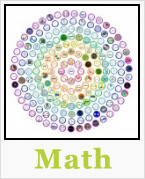



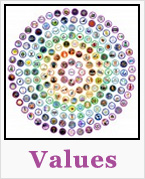
OPEN SOURCE CURRICULUM OUTLINES (click image for summaries and links to complete pages)
CARE
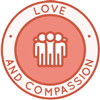
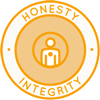

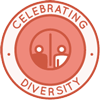
SHARE
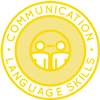
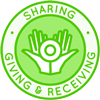
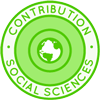
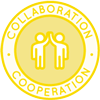
PLAY
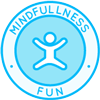
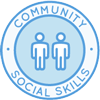
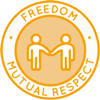
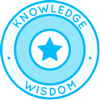
OPEN SOURCE TEACHING METHODOLOGY SUMMARIES
Montessori | Waldorf | Orff | Reggio | Multi-Intelligence | Bloom's Taxonomy | Study Tech | I-WE
INDEX OF ALL THE ONE COMMUNITY OPEN SOURCE LESSON PLANS

Click this image for the Lesson Plans for Life page with links to the rest of the lesson plans
THE WORLD'S LARGEST ONLINE FREE EDUCATION RESOURCE ARCHIVE
RELATED CONTENT AND OTHER RELATED RESOURCES
We're building this resource section. Click here if you have a suggestion or resource for this page.
























 One Community
One Community



